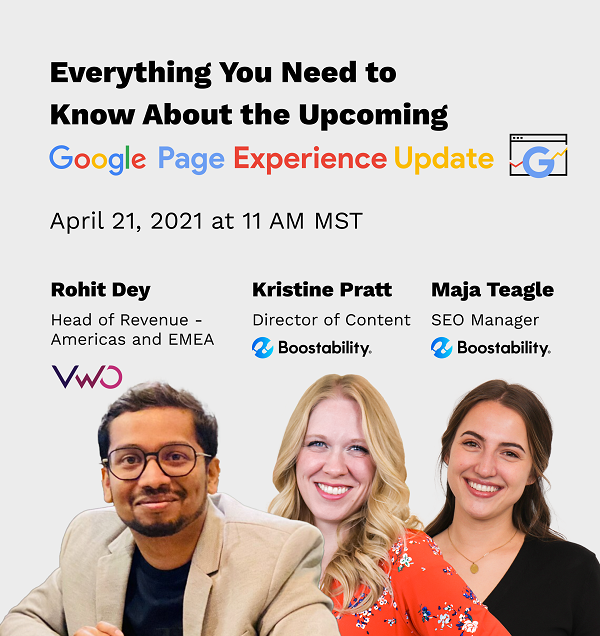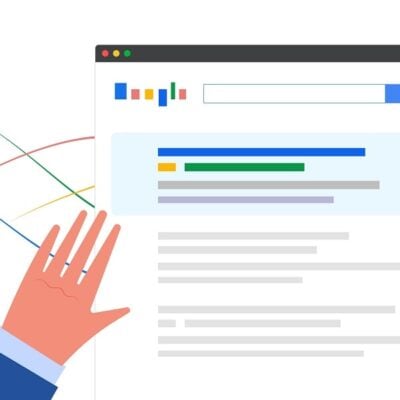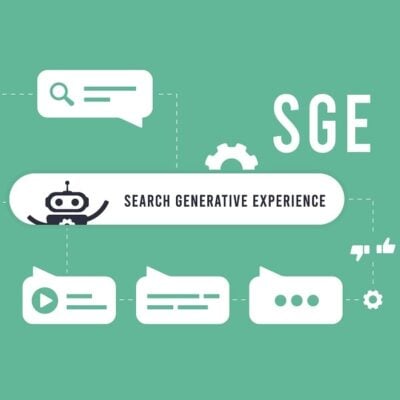This month’s Search Sessions was all about the upcoming Google Page Experience Update. And just this week, Google announced that we now have a little more time! The update was going to start rolling out in May, but now will come out in mid-June and roll out through August. This update will have a big impact on the search landscape so it’s time to prepare!
We were joined by our guest Rohit Dey, Head of Revenue – Americas & EMEA with website experience optimization platform VWO. Our Boostability SEO Manager Maja Teagle also joined the discussion. Together they provide insights and action items you can apply to your website so you’re ready for the Page Experience Update.
Watch our full Search Sessions here or read on for some key takeaways:
What is the Google Page Experience Update?
Nearly a year ago, Google announced Core Web Vitals as a new metric to measure the user experience and page performance of a website. It was later disclosed that Core Web Vitals would become a ranking factor, thus changing the name to the Page Experience Update. Overall, the update will focus on addressing site speed issues and improving Core Web Vital metrics, and enhancing user experience through both SEO and website functionality.
Ranking factors for the Page Experience Update:
Core Web Vitals
The three metrics within Core Web Vitals thus far are Largest Contentful Paint (LCP), First Input Delay (FID), and Cumulative Layout Shift (CLS). LCP measures the point when the main content of the page has loaded, like an image or a text block. You should be aiming for a score of 2.5 seconds or less. FID measures load responsiveness, which is the amount of time it takes for the page to respond to the user’s interaction. 100 milliseconds or less is a good FID score to aim for on your website. CLS measures the visual stability of a page and how often site visitors experience unexpected layout shifts on a page causing you to click a button or link that you didn’t intend to at the very last minute. With this metric, aim for a score that’s less than 0.1.
Scoring well on Core Web Vitals is indicative of a good user experience. In preparation for the Page Experience Update, start by addressing the pages categorized as ‘Poor URLs’ in the Search Console report. These are the ones that are farthest from meeting the minimum standards and need improvement ASAP.
Mobile Friendliness
With 50% of internet traffic coming from a mobile device, you need to make sure your website is optimized for mobile viewing. Use tools like the Mobile-Friendly Test to see how Google views your web pages. You can check specific URLs to see if they pass the mobile-friendly test or learn about areas for improvement. Ensure your website is responsive and functions properly across multiple mobile devices including tablets.
Do an audit of your site and check for common issues like overlapping or cut-off elements, buttons or links that are too close together, and text that is too small to read. Improve your mobile site speed, starting with the most valuable pages. The Core Web Vitals report in Search Console has one section specific to mobile URLs. Check to see which pages are marked as ‘Poor’ in the report and work on those first, or use the PageSpeed Insights tool for a detailed breakdown of what can be improved.
Intrusive Interstitial Guidelines
Avoid intrusive ads and interstitials on mobile websites. These often come in the form of a pop-up or an interactive ad placed in between content. While they may help generate sales, they can have the opposite effect for your website’s performance if displayed on mobile devices. With less space than a desktop, these ads and interstitials can become annoying to mobile users and hinder their experience. It can also make it difficult for them to find the information they want when unexpected pop-ups take over their screen.
Safe Browsing
Google wants to create a safe browsing experience for users and also help webmasters flag and resolve security issues threatening their websites. This helps promote a better user experience as a whole. Some security issues to watch for are:
-
- Malware
- Deceptive pages
- Harmful downloads
- Uncommon downloads
Use Search Console to help flag issues. Find alerts within the ‘Security and Manual Actions’ category and work closely with your web developer on resolving any present issues that threaten safe browsing on your website.
HTTPS
In 2016, Google encouraged sites to make the transition from HTTP to HTTPS for added security for both the users and the site hosts. This has since become a common practice for most industries. If you haven’t made that switch yet, now is the time! However, it’s important to understand the impact that site migrations can have on website performance. If not done properly, a website’s traffic and sales can drop significantly. While it’s common to see a drop in traffic in the first few months of any site migration, it can continue to drop if crucial elements were not accounted for upon the launch. This is why it’s important to work with professionals who can properly execute a site redesign and migration, with SEO in mind.
If you want to take a look at what your website looks like and if you’re prepared, use these tools provided by Maja to measure your site.
- Mobile-Friendly Test: https://search.google.com/test/mobile-friendly
- Screaming Frog: https://www.screamingfrog.co.uk/ (You have to download it)
- PageSpeed Insights: https://developers.google.com/speed/pagespeed/insights/
- For additional resources: https://www.boostability.com/content/google-algorithm-update-page-experience-core-web-vitals
How to Improve Website Performance and User Experience
With this update, Google is focusing on user experience. Think about if you are welcomed to a new restaurant with a lot of hype around it and when you show up it completely lacks anything promised. User experience on a website is similar and Google has been focusing on it for years. Google is making this update to reflect the true user experience when a visitor comes to your website. A few things that play an important role with visitors is customer satisfaction, closely related with user experience, and increasing conversions.
Framework to Improve Website Conversion/Performance & User Experience
- Research – Track metrics and identify what parts of the conversion funnel need fixing. Do your research and understand how different users are interacting with your website. Use the right tools to give you the data you need to generate user insights. The more data you can collect to optimize your website, the better.
- Hypothesis – Construct educated hypotheses based on your research. Based on observations you make from your collected data, you arrive at the conversion metric you want to influence and start to come up with a solution. Test specific audiences to see how changes impact them.
- Prioritize- Plan and prioritize your hypothesis. Use a prioritization framework based on confidence, importance, and ease:
- Confidence – How confident are you of achieving a better experience for users / uplift in conversion rates from this change? Higher confidence can be achieved with high level research.
- Importance – Once you identify your audience, how valuable are they? Is it worth changing your website, sales funnel, or processes for? A change that impacts the bottom of the funnel could be more important than a change that impacts the top of the funnel.
- Ease – How easy is it to implement this change? Not just for your design and development team, but also take into account how easy it is to get all stakeholders to agree to the change.
- Test- Test your hypothesis against the existing version of the website. It is important to test out every small change that you’re making. Choose from different testing types: A/B, multivariate, and split.
- Measure/Learn- Deploy the winning hypothesis and/or gathered learnings. Are your user experience improvement efforts working? Connect your results to revenue attribution to directly draw the line to the top link of contribution.
Continuously repeat this process to achieve the best user experience, website performance, and hypergrowth. Testing and learning helps you make informed decisions at every stage of your website and your business.
How to Improve Your SEO Strategy for the Google Page Experience Update
E-A-T
Expertise, Authority, Trustworthiness. Every Google update maintains the importance of E-A-T to enhance the user experience of your website and its content. It can be demonstrated through both on-site strategies, like links.
-
- Action Items:
- Have accurate and factual information that reflects scientifically proven and accepted findings on your website.
- Create authoritative and well-researched content. This can take the form of blog articles, FAQs, resource content, original research, case studies, and much more.
- Provide information produced or reviewed by an authoritative source within an industry. You can convey this type of information through team bios, author bios, and about us pages. If there isn’t a specific specialist or professional in your company that can do this, seek outside help from a professional that would be willing to review the content for accuracy.
- Action Items:
Content creation
Content is king when it comes to performing well upon algorithm updates and for SEO in general.
-
- Action Items:
-
-
- Content helps you establish E-A-T. Creating quality content is an effective way to demonstrate a site’s E-A-T and to show Google that you constantly work to improve and refresh the information featured on your website.
- Keyword research still plays a vital role in the success of an SEO strategy, so do some in-depth keyword research to identify content opportunities and drive your strategy.
- Create high quality blog articles & in-depth resource guides. (Informative blog articles, resource content, original research, case studies, whitepapers.). Get creative with your approach, incorporate keywords and links throughout the content, and provide accurate, high quality content that your site visitors will find valuable.
- Create FAQ & glossary pages.
- Provide Product/service specific landing pages on your website.
-
Repurpose existing content
Take the time to update your existing content to stay up-to-date with new information and trends. You don’t have to create all your content from scratch.
-
- Action Items:
-
-
- Find pieces you currently rank for and update them with the latest information.
- Update product pages with new features and user data.
- Take popular pieces and regularly check them to make sure data hasn’t become old news.
-
Clean up deadweight content
Some content is impossible to update and becomes essentially useless. If it no longer serves your website, the user, is irrelevant to your business, or doesn’t perform well, get rid of it!
-
- Action Items:
-
-
- Check analytics data (6 mo. to 1 year) on old content to see how it’s performed or if it’s generated sales.
- Segment which pages need repurposing, consolidation, or if it needs to be removed entirely.
- Removing irrelevant pages removes this excess weight taking up valuable crawl budget space.
-
Relevancy improvements
While not a direct ranking factor, relevancy makes good websites stand out, and thus rank higher. Making your posts relevant helps the user experience.
-
- Action Items:
-
-
- How easy is it for searchers to find the answer to their question or search query? Make your content easy to understand.
- Do searchers leave your website with unanswered questions? Be sure to address them.
- Is the page just a huge blog of text? Include images, videos, and headings to break up walls of text to improve readability.
-
Page design and structure
Long form articles are important for search engines, but can be hard to navigate. Enhance your page structure and design.
-
- Action Items:
-
-
- Organize content with headers (h1, h2, h3, etc.).
- Place images and other visual elements throughout the page.
- Utilize bulleted and numbered lists.
- Add internal links to take people to other valuable and relevant pages.
- Use a call-to-action (CTA) to help increase lead generation.
- Use anchor links for easy access.
-
How will the Page Experience Update Impact Website Performance
So, what does this all mean for you and your website? You will continue to compete on things such as content, meta descriptions, and technical SEO. With this update, you will also compete with things like speed, safety, and consistency (layout, visuals, format). This is just the first step in the overall web experience Google is trying to achieve.
Google has created a structure and framework to compel brands to focus on user experience. Better experience saves time, effort, money, and makes customers happy. This will make marketers more disciplined with UX. The more we care about this and give a great experience, the better the ranking, traffic, conversions, revenue. If you don’t act on this now, it could lead to a negative impact on your page rankings and all downstream metrics once the update is rolled out. Small changes can have a high impact.
Prioritize page impact. Dig deeper into all 3rd party codes installed on your website. Identify the codes that are slowing your website down. Optimize for speed. Identify non critical tools that you aren’t adding value and remove them. Ensure you have lazy loading correctly set up and optimize images with next-gen formats like WebP.
Optimize your rendering framework and work with your developers to understand the best approach for your site structure. Your goal is to optimize first time loading, all subsequent loading, and also ensure that crawlers are able to make sense of your website. Keep experimenting and collect user behavior data to improve your UX.
There are many unknowns with the Google Page Experience Update but the best way to approach it is by building a culture of experimentation. Apply changes and monitor the change in rankings. Learn, tweak, and repeat the process as needed. The culture of experimentation is important for your organization. Even continuous small experiments can help lead you to big wins.
RESOURCES FROM VWO
- Key Pillars of a Successful Conversion Optimization Program
- ROI of Experimentation
- VWO Performance Improvement Updates to reduce impact on Google PageSpeed score
- GoodUI.org
- Interested in trying out VWO for your website to test optimizations and enhancements? Email [email protected]







